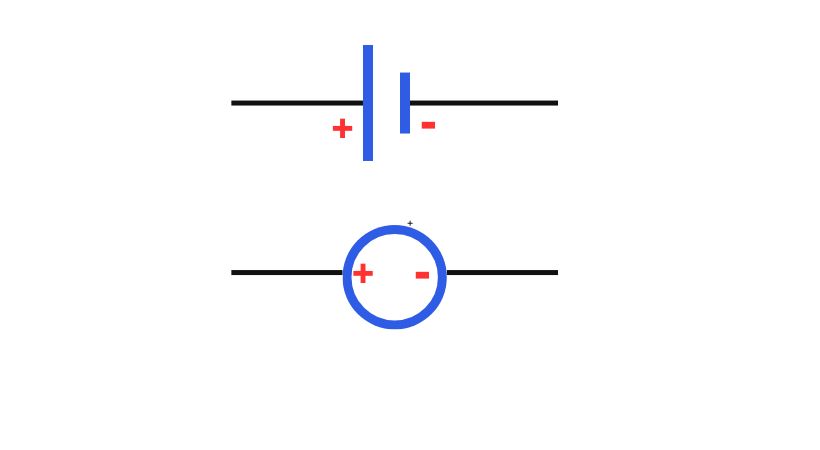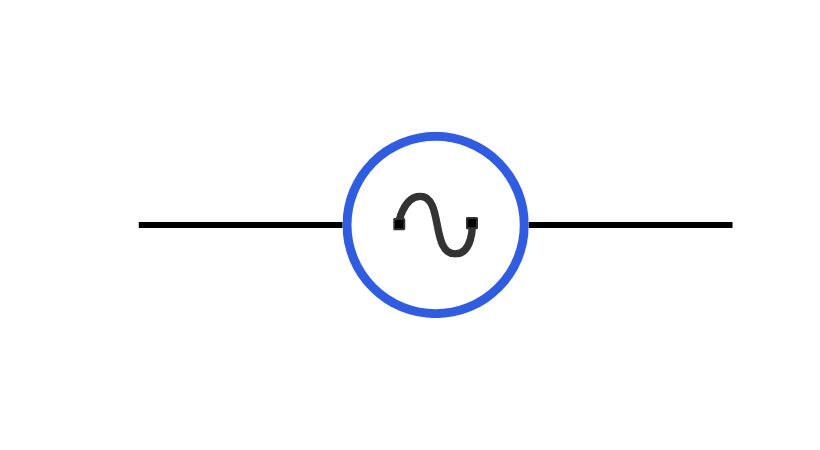Let’s learn about what is voltage, and why we need a voltage source for the electronic circuit to work properly.
Voltage is described as pressure, that pushes the electric charges to move in a specific direction. When electric charges move in a conductor or semiconductor electricity is produced. Voltage is what makes electric charges move. Voltage is sometimes called potential difference, electric pressure, or electric tension.
In this article, we’ll learn about voltage, how it works, and how we can measure it.
Voltage
You make a circuit on a breadboard. To test and power it up, energy or power is required. Just like for a human to work food is required. Similarly, the food for circuits is Voltage.
The voltage may seem difficult to learn, but as you start learning it step by step, it becomes much easier.
As we have learned the atom has charge particles protons and electrons and the movement of these charges produces electricity. For the movement these charges need a push and that pushing force is voltage.
Let me explain more, we all know that there are free electrons in the conductor and they move randomly within the conductor. Those free electrons are of no use if they are moving randomly.
When we apply a voltage across the conductor in a circuit it pushes the free electrons to move in a specific direction to cause current.
The voltage is defined as energy that is required to move a unit charge between two points of an electrical circuit.
Voltage is referred to as pressure, it pushes the charges in an electronic circuit it is the same as pressure moves water through a valve. Let’s explain voltage with an example of a water tank.
If we have a tank filled with water, when we open the valve the water will flow with high pressure. On the other hand, if the tank is half filled it will cause less pressure as the mass of water is less.
The same is true with voltage, the higher the voltage more electric charges will pushed.
Potential difference
In some texts, the voltage is called the potential difference.
Let’s explain this with the example of two lakes.
If the two lakes are following at the same level it means it has no potential energy to do work but if we place an object between them then the level of one lake will increase and the energy will be stored as potential energy.
Now when we give a path, the water will flow from one lake from higher potential to lower potential means to another lake. If we put a turbine between them we use this potential energy to make electricity and to power a light.
With electronic circuits, the battery has two different electrical potentials, positive and negative, which gives it a potential difference (or voltage).
If we place a wire at both terminals the potential difference between the electric charges of the battery will force electrons to flow all in the same direction, if a bulb is placed in their route, it will light up.
Unit of voltage
The S.I. unit of voltage is a volt. This unit was after the Italian physicist Alessandro Volta who invented the first electric battery the voltaic pile. The joule per coulomb is the base unit of voltage.
The voltage is represented by capital “V” or capital “E”.
The Volt is expressed as the potential difference between two points means the amount of work done by moving a positive charge from one point to another against the electrostatic force.
So,
V=Work done/charge
The unit of work is the joule, and the charge is measured in coulomb. So the voltage will be one volt if one joule of work is done by moving a one-coulomb charge in the circuit.
Mathematically the voltage is also measured by Ohm’s law. Ohm’s law is given by the product of the current flowing in the conductor and its resistance.
V=IR
In the above equation, “V’ represents voltage, “I” is for current, and “R” is for resistance. The unit of Voltage can also be denoted as
V=Ampere.Ohm
In the circuit, the voltage can alternatively be described in terms of power and current as,
P=IV
V=P/I
In terms of power and resistance, the voltage can also be represented in the circuit.
P=V/RV
And,
P=V^2/R
These are some formulas that can be used to calculate voltage in circuits.
Types of voltage
We have two types of voltage direct voltage and alternative voltage.
1. Direct voltage
If the polarity of the voltage does not change with time in the circuit, it is called direct voltage.
The battery is the best example of direct voltage. The battery has a positive and negative terminal that always pushes the electrons in one direction.
The DC voltage is normally used for electronics and AC motors.
The DC voltage source in the circuit is represented as,

2. Alternative voltage
Alternating voltage is a term used to describe a voltage when the direction and magnitude of the voltage change continuously. Alternating current (AC) is the type of voltage that is delivered to households all around the world.
In an AC circuit, the current flows in two directions. The current direction is constantly changing then the voltage to all components will also be changing.
So it means that the voltage between two points in the circuit changes.
The Alternative voltage has a sinusoidal waveform. The AC voltage source in the circuit is given by,

Voltage measurement
In electrical or electronic circuits, the measurement of voltage is important.
The voltage in any circuit will be measured between two points. The voltmeter and digital multimeter are devices that can measure voltage.
1. Voltmeter
A voltmeter is an essential tool for determining the voltage in an electric and electronic circuit and can give important information about the electrical potential difference between two points.
A voltmeter can measure both direct and alternative voltage. The voltage drop across a single component or supply can be measured using a voltmeter, as well as the total voltage drop across multiple points or components within a circuit.
The voltameter is connected parallel with the circuit components whose voltage is to be measured in this method.
The voltmeter will measure the voltage drop across the two points when the current is flowing through it.
2. Digital multimeter
Nowadays, a digital multimeter is most popular among professionals, electronics, and electrical engineers because of its easy-to-use interference.
Once you understand the basics of a multimeter, measuring any electrical parameter in a circuit will become easy.
With a digital multimeter, you can measure current, resistance, and voltage. It can measure both direct and alternative voltage.
In this method, when you want to measure voltage you have to set the nob to the voltage. Now the two leads (probes) of the digital multimeter are connected across the component whose voltage you want to measure.
After measuring voltage, the multimeter shows the result on the LCD in digits. The digital multimeter is portable and easy to use.
Conclusion
Voltage is essential for the functionality of the circuit if there is no voltage there will be no current in the circuit.
The voltage is the force that pushes the electrons in the circuit. Voltage is also called potential difference, it is the energy that moves a unit charge from one point of the circuit to another.
The SI unit of voltage is the volt and can also be measured in terms of Ohm’s law. In terms of power and resistance, the voltage can also be calculated mathematically.
There are two types of voltage direct and alternative voltage. When the polarity of voltage does not change with time it is direct voltage and if the voltage polarity changes with time it is known as alternative voltage.
You can use a voltmeter or a multimeter to determine the voltage in an electrical or electronic circuit.
That’s it, this was all about voltage.
Other useful posts:
